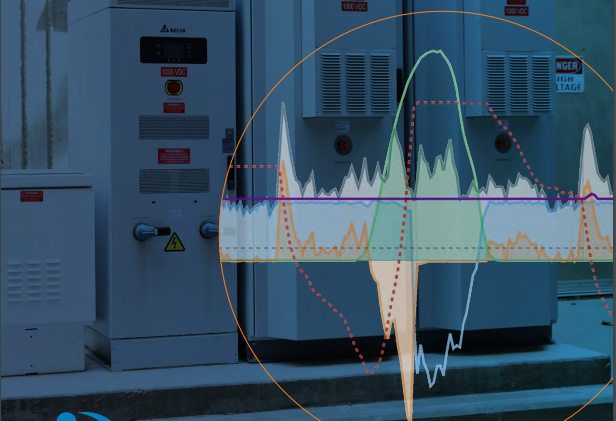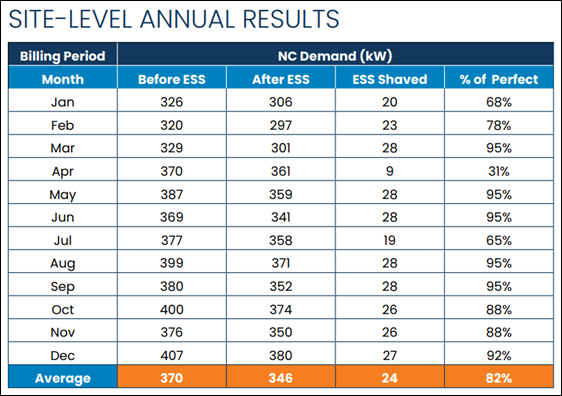The Energy Toolbase team recently published awhitepaper on our Acumen EMS™ controls software to increase transparency into how energy management system software operates and maximizes economic value capture in the field. To evaluate the performance of an Acumen-controlled energy storage site over a calendar year, we reviewed a year’s worth of operational data, focusing on the non-coincident (NC) demand before and after storage. With these data points, we determined how much demand the energy storage system (ESS) shaved, and how efficiently it did so.
American Faucet Site
American Faucet operates a 60,000-square-foot manufacturing facility in San Diego, where the standalone 29.4 kW/57 kWh rated ESS project is sited. The customer is on San Diego Gas & Electric’s (SDG&E’s) AL-TOU utility rate schedule, featuring one of the highest NC demand charges in the state. Since the project’s mid-2019 commission date, AL-TOU’s NC demand charges ranged between $25 to $30 per kilowatt. Reducing NC demand charges with energy storage is a high-stakes application, given that a single 15-minute interval sets the billed NC demand value for an entire billing cycle.
Perfect Foresight Algorithms
To interpret how Acumen EMS shaves demand efficiently, we use “% of perfect” as shown in the site-level annual results table below. In the whitepaper, we detail how the “% of perfect” variable is calculated using perfect foresight algorithms, which have complete information about the future and are used to simulate the mathematically optimal dispatch profile. ETB’s engineering manager in charge of Acumen EMS control strategies, Prudhvi Tella, explained that “the intention with perfect foresight algorithms is to determine the maximum potential savings. Predictions based on a perfect forecast essentially provide the maximum upper bound for the theoretical savings.” Our engineering, data science, and operations teams then use the results of perfect foresight algorithms as a baseline against the actual observed performance we are achieving in the field with Acumen EMS, which utilizes artificial intelligence (AI) and machine learning to dispatch the EMS based on an unknowable future.
The site-level annual results table presents how Acumen EMS reduced 82% of the customer’s NC demand on average relative to perfect over the full year. Unpacking further, we can see that Acumen eclipsed 90% of perfect in six out of the twelve months. One noticeable outlier month in April was Acumen performed poorly, only shaving 9 kW of NC demand, representing 31% of perfect. This substandard performance was due to an errant load forecast, where a customer demand of 361 kW was set. However, Acumen’s performance improved markedly later in the year, averaging 92% of perfect over the last five months. This performance improvement is a common trend observed across many of our Acumen EMS deployments. As Acumen consumes more historical usage data, it can make more accurate future load predictions and dispatch more efficiently.
We intend to publish more annual site result reports to demonstrate how Acumen performs in different applications. Check out the full whitepaper we published in March of this year:Monetize Your Energy Storage Asset – Demystifying How Acumen EMS™ Reliably Dispatches to Achieve Optimal Financial Returns.


